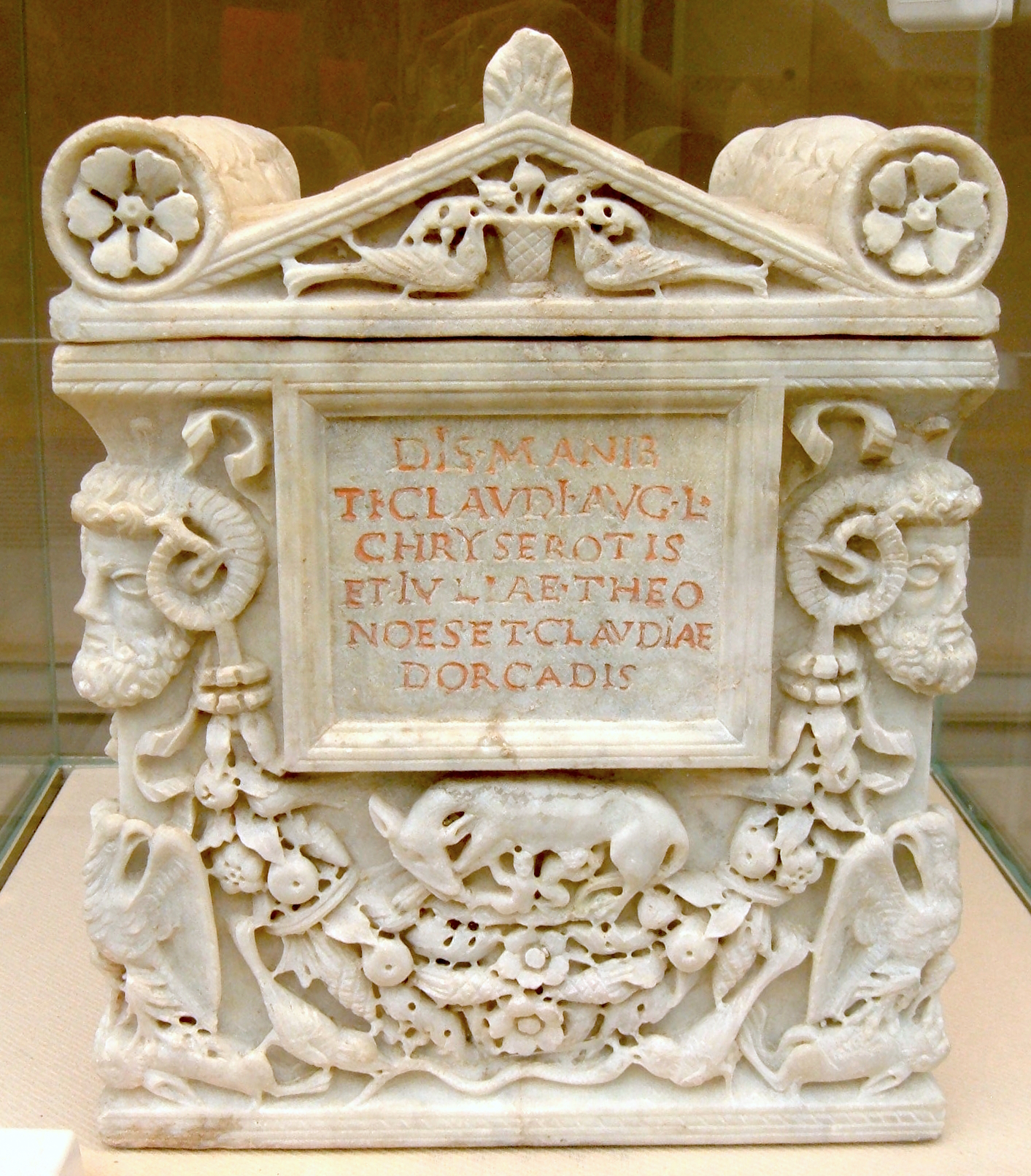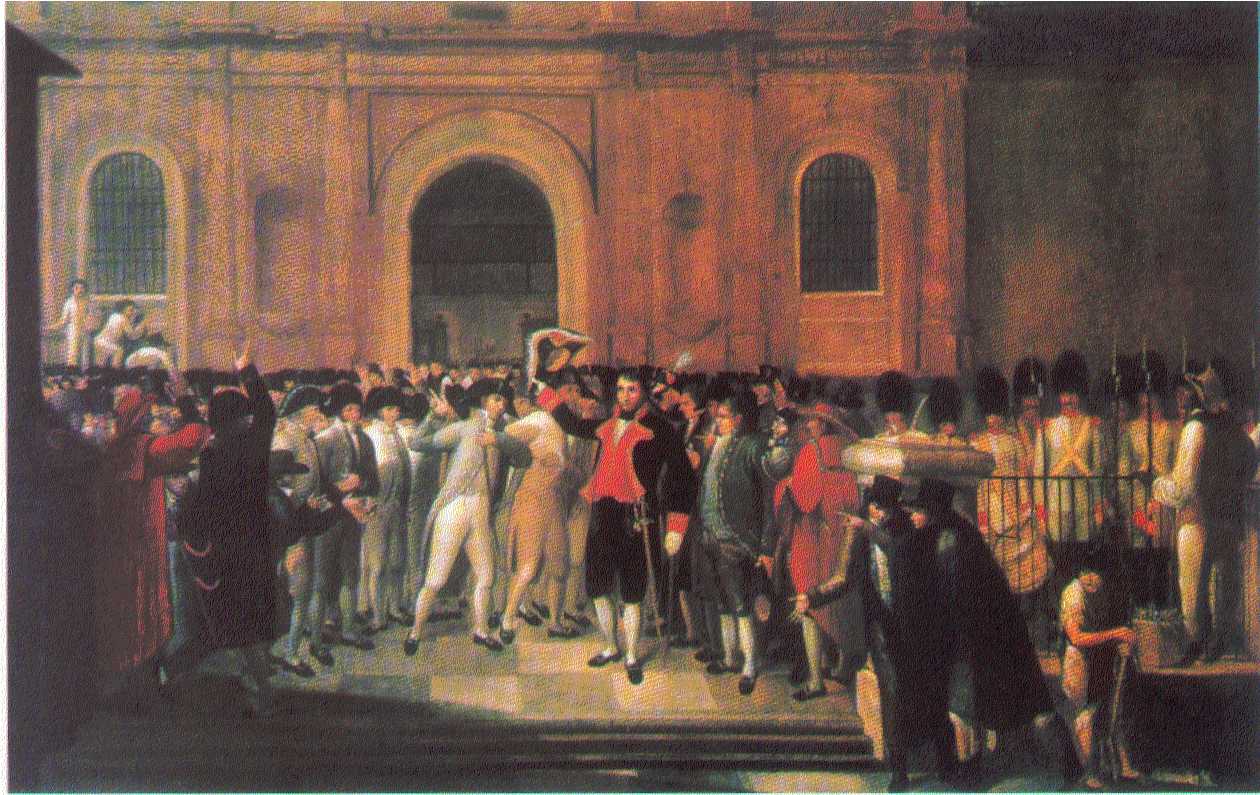|
Felipa Larrea
Felipa Larrea de Larrea (born 1 May 181018 January 1910) was an Afro-Argentine woman, widely considered to be the last surviving African slave from the colonial period in Argentina. Early life Felipa Larrea was born on 1 May 1810, 24 days before the Revolución de Mayo, which triggered the Argentine War of Independence. Her father was an African American slave by the name of Juan Larrea, who had been bought by Spanish-born merchant and politician Juan Larrea, whose surname he bore. Felipa's mother was María Magdalena Rodríguez, an African slave born in Equatorial Guinea who had been in service of Don Patricio Salas. As a girl, Felipa was bought by Justa Visillac de Rodríguez, wife of José Antonio Rodríguez. The Rodríguez family were members of the Basílica de Nuestra Señora de la Merced, the oldest Roman Catholic congregation in Buenos Aires. She was brought up in the Casa de Ejercicios Espirituales "Sor María Antonia de la Paz y Figueroa", in what is now the Buenos A ... [...More Info...] [...Related Items...] OR: [Wikipedia] [Google] [Baidu] |
Buenos Aires
Buenos Aires, controlled by the government of the Autonomous City of Buenos Aires, is the Capital city, capital and largest city of Argentina. It is located on the southwest of the Río de la Plata. Buenos Aires is classified as an Alpha− global city, according to the Globalization and World Cities Research Network, GaWC 2024 ranking. The city proper has a population of 3.1 million and its urban area 16.7 million, making it the List of metropolitan areas, twentieth largest metropolitan area in the world. It is known for its preserved eclecticism, eclectic European #Architecture, architecture and rich culture, cultural life. It is a multiculturalism, multicultural city that is home to multiple ethnic and religious groups, contributing to its culture as well as to the dialect spoken in the city and in some other parts of the country. This is because since the 19th century, the city, and the country in general, has been a major recipient of millions of Immigration to Argentina, im ... [...More Info...] [...Related Items...] OR: [Wikipedia] [Google] [Baidu] |
Argentine Republic
Argentina, officially the Argentine Republic, is a country in the southern half of South America. It covers an area of , making it the List of South American countries by area, second-largest country in South America after Brazil, the fourth-largest country in the Americas, and the List of countries and dependencies by area, eighth-largest country in the world. Argentina shares the bulk of the Southern Cone with Chile to the west, and is also bordered by Bolivia and Paraguay to the north, Brazil to the northeast, Uruguay and the South Atlantic Ocean to the east, and the Drake Passage to the south. Argentina is a Federation, federal state subdivided into twenty-three Provinces of Argentina, provinces, and one autonomous city, which is the federal capital and List of cities in Argentina by population, largest city of the nation, Buenos Aires. The provinces and the capital have their own constitutions, but exist under a Federalism, federal system. Argentina claims sovereignty ov ... [...More Info...] [...Related Items...] OR: [Wikipedia] [Google] [Baidu] |
People From Buenos Aires
The term "the people" refers to the public or common mass of people of a polity. As such it is a concept of human rights law, international law as well as constitutional law, particularly used for claims of popular sovereignty. In contrast, a people is any plurality of persons considered as a whole. Used in politics and law, the term "a people" refers to the collective or community of an ethnic group or nation. Concepts Legal Chapter One, Article One of the Charter of the United Nations states that "peoples" have the right to self-determination. Though the mere status as peoples and the right to self-determination, as for example in the case of Indigenous peoples (''peoples'', as in all groups of indigenous people, not merely all indigenous persons as in ''indigenous people''), does not automatically provide for independent sovereignty and therefore secession. Indeed, judge Ivor Jennings identified the inherent problems in the right of "peoples" to self-determination, as i ... [...More Info...] [...Related Items...] OR: [Wikipedia] [Google] [Baidu] |
Freedmen
A freedman or freedwoman is a person who has been released from slavery, usually by legal means. Historically, slaves were freed by manumission (granted freedom by their owners), emancipation (granted freedom as part of a larger group), or self-purchase. A fugitive slave is a person who escaped enslavement by fleeing. Ancient Rome Rome differed from Greek city-states in allowing freed slaves to become plebeian citizens. The act of freeing a slave was called ''manumissio'', from ''manus'', "hand" (in the sense of holding or possessing something), and ''missio'', the act of releasing. After manumission, a slave who had belonged to a Roman citizen enjoyed not only passive freedom from ownership, but active political freedom ''(libertas)'', including the right to vote. A slave who had acquired ''libertas'' was known as a ''libertus'' ("freed person", feminine ''liberta'') in relation to his former master, who was called his or her patron ''( patronus)''. As a social class, fre ... [...More Info...] [...Related Items...] OR: [Wikipedia] [Google] [Baidu] |
Argentine People Of African-American Descent
Argentines, Argentinians or Argentineans are people from Argentina. This connection may be residential, legal, historical, or cultural. For most Argentines, several (or all) of these connections exist and are collectively the source of their being Argentine. Argentina is a multiethnic society, home to people of various ethnic, racial, religious, denomination, and national origins, with the majority of the population made up of Old World immigrants and their descendants. As a result, Argentines do not equate their nationality with ethnicity, but with citizenship and allegiance to Argentina. Aside from the indigenous population, nearly all Argentines or their ancestors immigrated within the past five centuries. Among countries in the world that have received the most immigrants in modern history, Argentina, with 6.6 million, ranks second to the United States (27 million), and ahead of other immigrant destinations such as Canada, Brazil and Australia. Ethnic groups Overview ... [...More Info...] [...Related Items...] OR: [Wikipedia] [Google] [Baidu] |
Afro-Argentine People
Afro-Argentines (), also known as Black Argentines (), are Argentines who have predominantly or total Sub-Saharan African ancestry. The Afro-Argentine population is the result of people being brought over during the transatlantic slave trade during the centuries of Spanish domination in the region and immigration. During the 18th and 19th centuries they accounted for up to fifty percent of the population in certain cities, and had a deep impact on Argentine culture. Some old theories held it that in the 19th century the Afro-Argentine population declined sharply due to several factors, such as the Argentine War of Independence (c. 1810–1818), high infant mortality rates, low numbers of married couples who were both Afro-Argentine, the War of the Triple Alliance, cholera epidemics in 1861 and 1864 and a yellow fever epidemic in 1871. Research in recent decades cites a strong racial intermixing with whites and indigenous peoples in the 18th and 19th centuries as the main reason ... [...More Info...] [...Related Items...] OR: [Wikipedia] [Google] [Baidu] |
1910 Deaths
Events January * January 6 – Abé people in the French West Africa colony of Côte d'Ivoire rise against the colonial administration; the rebellion is brutally suppressed by the military. * January 8 – By the Treaty of Punakha, the Himalayan kingdom of Bhutan becomes a protectorate of the British Empire. * January 11 – Charcot Island is discovered by the Antarctic expedition led by French explorer Jean-Baptiste Charcot on the ship '' Pourquoi Pas?'' Charcot returns from his expedition on February 11. * January 12 – Great January Comet of 1910 first observed ( perihelion: January 17). * January 15 – Amidst the constitutional crisis caused by the House of Lords rejecting the People's Budget the January 1910 United Kingdom general election is held resulting in a hung parliament with neither Liberals nor Conservatives gaining a majority. * January 21 – The Great Flood of Paris begins when the Seine overflows its banks. * January 22 – Completion of cons ... [...More Info...] [...Related Items...] OR: [Wikipedia] [Google] [Baidu] |
1810 Births
Events January–March * January 1 – Major-General Lachlan Macquarie officially becomes Governor of New South Wales. * January 4 – Australian Seal hunting, seal hunter Frederick Hasselborough discovers Campbell Island, New Zealand, Campbell Island, in the Subantarctic. * January 12 – The marriage of Napoleon and Joséphine de Beauharnais, Joséphine is annulled. * February 13 – After seizing Jaén, Spain, Jaén, Córdoba, Spain, Córdoba, Seville and Granada, Napoleonic troops enter Málaga under the command of General Horace Sebastiani. * February 17 – Napoleon, Napoleon Bonaparte decrees that Rome would become the second capital of the First French Empire, French Empire. * February 20 – County of Tyrol, Tyrolean rebel leader Andreas Hofer is executed. * March 11 – Napoleon marries Marie-Louise of Austria by proxy in Vienna. April–June * April 2 – Napoleon Bonaparte marries Marie Louise of Austria, Duchess of Parma, in person, in Paris. * April 19 � ... [...More Info...] [...Related Items...] OR: [Wikipedia] [Google] [Baidu] |
Newsweek
''Newsweek'' is an American weekly news magazine based in New York City. Founded as a weekly print magazine in 1933, it was widely distributed during the 20th century and has had many notable editors-in-chief. It is currently co-owned by Dev Pragad, the president and chief executive officer (CEO), and Johnathan Davis, who sits on the board; each owns 50% of the company. In August 2010, revenue decline prompted Graham Holdings, the Washington Post Company to sell ''Newsweek'' to the audio pioneer Sidney Harman for one US dollar and an assumption of the magazine's liabilities. Later that year, ''Newsweek'' merged with the news and opinion website ''The Daily Beast'', forming The Newsweek Daily Beast Company, later called ''NewsBeast''. ''Newsweek'' was jointly owned by the estate of Harman and the company IAC (company), IAC. ''Newsweek'' continued to experience financial difficulties, leading to the suspension of print publication at the end of 2012. In 2013, IBT Media acquired ... [...More Info...] [...Related Items...] OR: [Wikipedia] [Google] [Baidu] |
Barracas, Buenos Aires
Barracas is a ''Barrios of Buenos Aires, barrio'', or district, in the southeast part of the city of Buenos Aires, Argentina. It is located between the railroad of Ferrocarril General Manuel Belgrano and the Riachuelo River, and the streets ''Regimiento de Patricios'', ''Defensa'', ''Caseros'', ''Vélez Sársfield'', ''Amancio Alcorta'', ''Lafayette'', and ''Lavardén''. The name Barracas comes from the word ''barraca'', which refers to a temporary construction of houses using rudimentary materials. History In the 18th century, "Barracas" began to grow on the banks of the Riachuelo River, becoming a slave quarter, as well as an area for leather Tanning (leather), tanneries, and abattoirs. On March 24, 1791, a bridge was built that gave the neighborhood an important strategic value during the British invasions of the Río de la Plata. In 1858, part of this bridge was destroyed by flood and was replaced by a new iron bridge in 1871. There were a series of problems with this new b ... [...More Info...] [...Related Items...] OR: [Wikipedia] [Google] [Baidu] |
Camila O'Gorman
Maria Camila O'Gorman Ximénez (9 July 1825 – 18 August 1848) was a 19th-century Argentine socialite infamously executed over a scandal involving her relationship with a Roman Catholic priest. She was 23 years old and allegedly eight months pregnant when she and Father Ladislao Gutiérrez faced a firing squad.Executions of Camila O'Gorman and Father Ladislao Gutiérrez executedtoday.com, 18 August 2008; accessed 28 July 2015. Biography Camila was born in , the youngest daughter of Adolfo O'Gorman y Perichón de Vandeuil, and his wife, Joaquina Ximénez Pinto. S ...[...More Info...] [...Related Items...] OR: [Wikipedia] [Google] [Baidu] |







